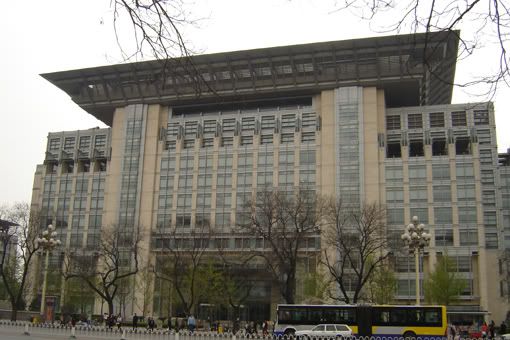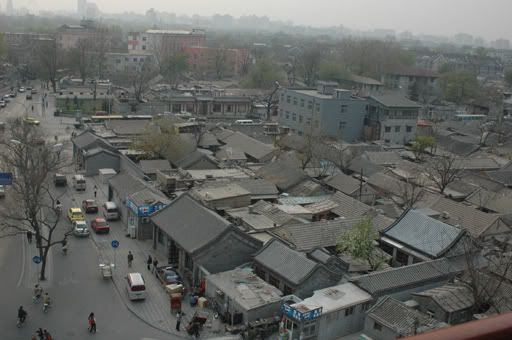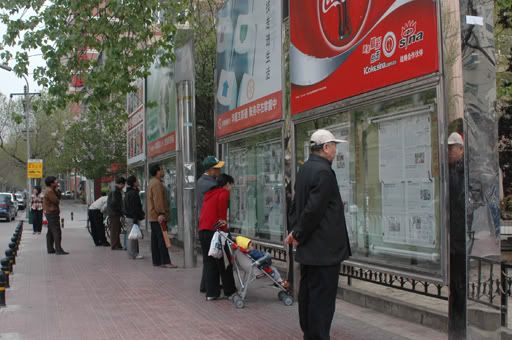We arrived in sunny but cold Beijing in mid-afternoon to find our hotel pick up waiting for us (we were definitely enthused to actually have someone there on time and who knew who we were as we were not sure what to expect when arriving in China). The 45 minute cab ride into the city was a nice introduction into this modern city, something that we did not anticipate.
We arrived at Beijing Shengdayuan Hotel, a wee bit disappointed by the cleanliness of the room but after requesting a new room were a bit more satisfied with what we got.
That evening we ventured out into the COLD windy night in the search of food. And yes, when we say COLD, we mean COLD!! Coming from mid 30 to 40 temperatures, we were not ready or equipped for the 10 degree weather in Beijing. It definitely reminded us of chilly mornings in Vancouver. It would have been a nice change if we had the proper attire with us. Our search for food was not as easy a task as we had become accustomed to. We knew language would pose somewhat of a problem in China but didn’t think it would be as difficult as it was that night as many of the local restaurants we walked into either didn’t speak any English at all nor did they have menus in English. Our mission was to find a restaurant with at least a Chinese menu which had pictures so we could at least point and choose what we wanted but we were lucky enough to come across a noodle shop where one of the waitresses spoke a little bit of English. The meal ended up being fantastic as it was exactly what we needed to warm us up and the price was great. We got two HUGE bowls of noodle beef soup for 24 Yuan ($3.50 CDN). It was worth the trouble to find the place…


Our first full day in Beijing was spent walking, walking and walking. Unlike most other cities we have visited where their tourist attractions are fairly close to one another and despite what the locals say, we were able to walk to and from quite easily. However, in Beijing, a city of 15 million people and 10 million bicycles, this was not the case. We found out the hard way as we ventured through the streets with our newly purchased map only to discover that each city block takes at least 20 minutes to walk through. We spent the entire morning trying to get to Tiananmen Square which seemed to be only 20 minutes away on the map but in actuality it took us an hour and a half. Despite the long walks, we enjoyed walking around Beijing as there were many things to take in and see.
Despite the far distances, we ventured on to the Drum and Bell Tower that afternoon for a quick visit and then moved towards the Lama Temple only to find it closed. The Drum and Bell Towers were built in 1272 and were the time keeping devices in the capital of the Yuan, Ming and Qing dynasties. The bell is rung to signify the rising of the sun while the drums are beaten to indicate the rising of the moon on a daily basis.

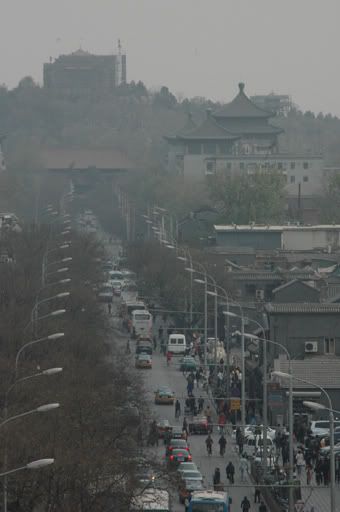
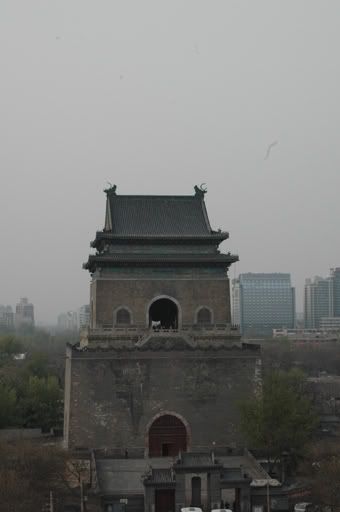
By nightfall, we were uncertain of the bus routes or the subway system; therefore, we ventured home on very sore feet and this only took a measly two and a half hours. By the time we got to our hotel room, we had spent a full 10 hours walking.
Day 2 was a little less strenuous on our feet as we took the subway to the Lama Temple which was a must see according to our guide. Originally this was a place of residence for Prince Yong but after his enthronement, this residence became a temple. But unlike most Chinese temples, it’s influenced by Tibetan Lamastery. Housing many relics of historical importance and having major restoration done in recent years, this is one of the better kept historic sites in Beijing.

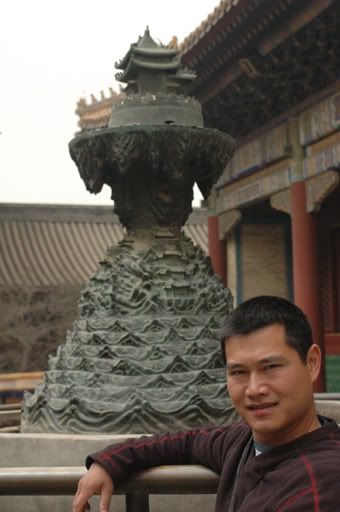
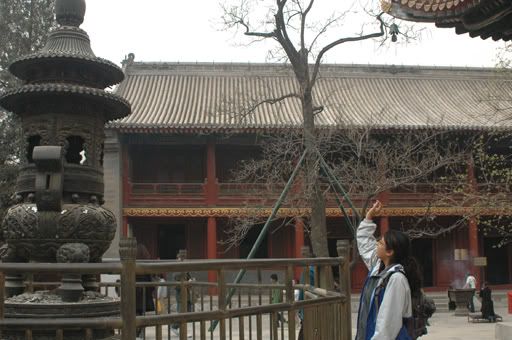
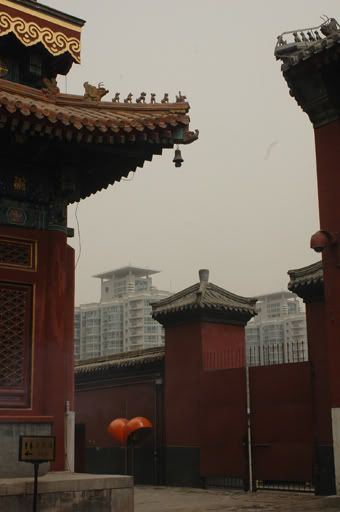
We also visited the Confucian Temple; however, we were disappointed to discover it was all under construction, as are many things in Beijing in preparation for the Summer Olympics in 2008.
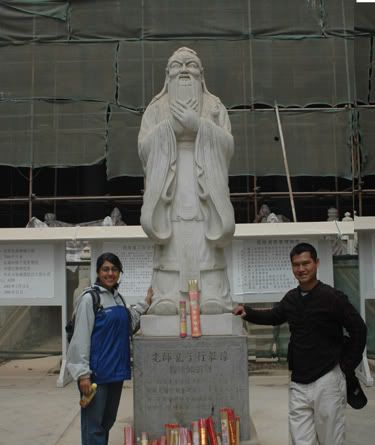
Later that afternoon, despite our throbbing feet from the day before, we decided to head to the south part of Beijing to visit the Temple of Heaven. The Temple of Heaven is a very large park which consists of three main temples: Hall of Prayer for Good Harvests, Imperial Vault of Heaven and Circular Mound. It was obvious that the area was not only used for prayer but was also used by the locals as a place to walk, socialize and do their tai chi. Unfortunately, once again, the grandest temple of them all, the Hall of Prayer for Good Harvests was closed to the public as it was undergoing renovations but we were able to walk around the vicinity and get some great shots.
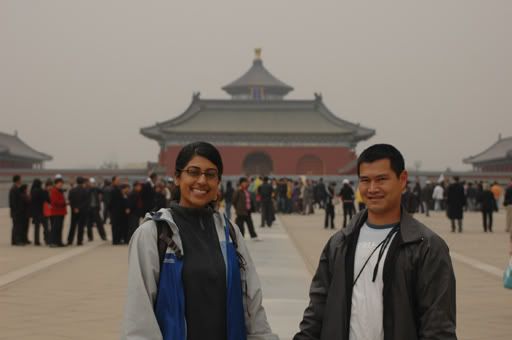

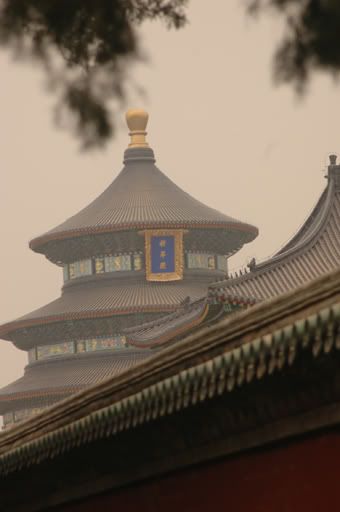
Two of the most famous sites in all of Bejing are Tiananmen Square and the Forbidden City. We left early one morning to catch the metro for the city center. The metro was quite a different experience than our last one as it seemed that all 15 million inhabitants from Beijing were there that day trying to catch the metro. We tried to get on to two trains but just couldn’t do it as everyone was packed into the cars like sardines and there was no way we could squeeze in. At one point, we saw a security guard trying to shove people into the compartment so they could fit in and the automatic doors could close. It happened so quickly that we could not get our camera out in time – now that would have been a picture moment.
We ended up at Tiananmen Square –the largest public square in the world which is roughly 400,000 square meters. It is meant for public display of gratitude or reverence to the governing bodies. The square consists of the Heroes’ Memorial in the middle, Chairman Mao’s Mausoleum to the south and the gates of the Forbidden City to the north. Flanking to the west is the Great Hall of the People and to the east is the Natural History Museum. It was a massive public gathering full of tourist groups covering the entire square. We explored the square before venturing to the Forbidden City.
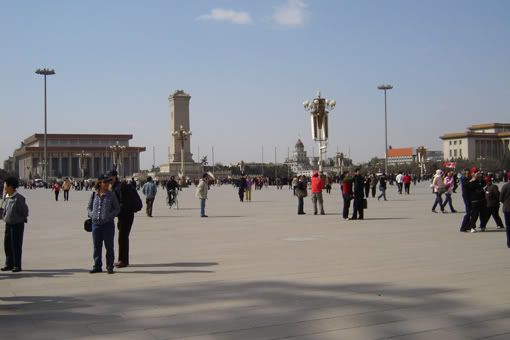
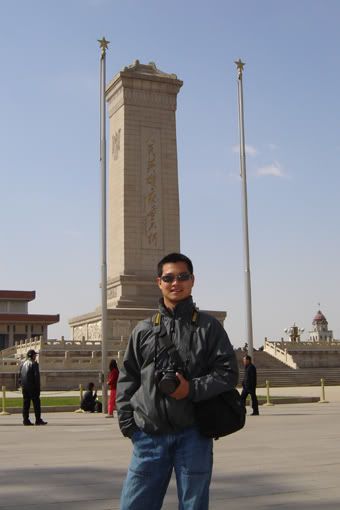
The Forbidden City was home to 10,000 people including 3,000 unix within the confines of this gigantic fortress which was home to the Ming and Qing dynasties. The Forbidden City was off limits for 500 years to the general public. Its main function was to house the emperor and all of his ceremonial duties as the son of Heaven. There are more than 25 halls, temples and gates leading from one complex to the next. Each section of the city comprises a formal gate with flanking halls and the main hall dedicated to different aspects of his rule. For instance, the Hall of Supreme Harmony was for performing state functions, and is the tallest building in Beijing. Other Halls and Gates include the Hall of Complete Harmony, Palace of Heavenly Purity, Hall of Mental Cultivation, Supreme Harmony Gate, and Gate of Prosperous Harmony. As most of these buildings are in different states of repair, it was hard to imagine the grandeur that it once held. The size of the entire complex, along with the fact that most buildings were covered in scaffolding for preparation for the Olympics, and the number of tourists rendered this experience somewhat empty for us.
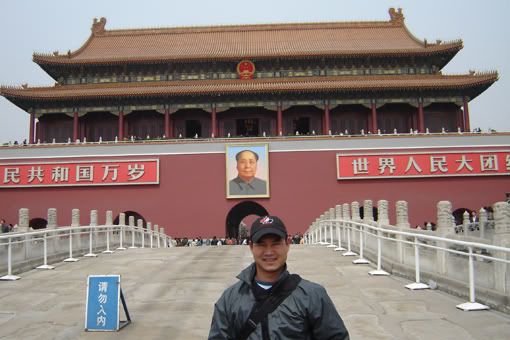
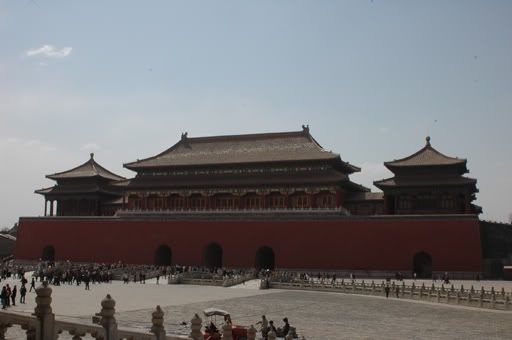


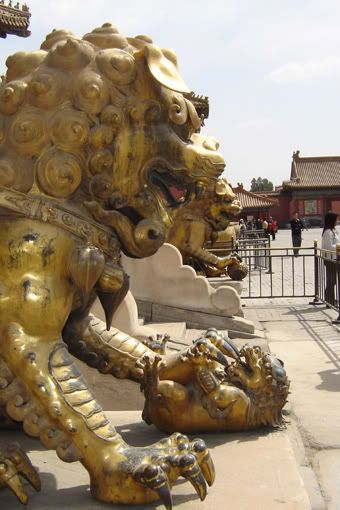
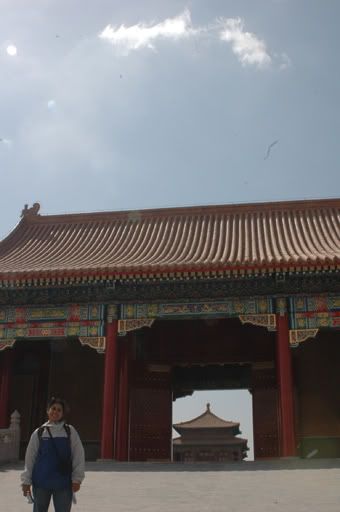



For the most part our experience in Beijing has been a good one. Without much preparation and knowledge of the city before hand, we found the city quite enjoyable and extremely clean despite the annual sand storms that venture down from Mongolia this time of year for a visit. The food was amazing and was extremely cheap. Traffic was smooth but pedestrian crossing required tactful skills of hip and foot. I don’t know what I was thinking, but I had an image of Beijing as a small, compact and interwoven city with alley ways and single family one level homes. Boy I could not have been more wrong! Beijing is a modern western style city with mega-infrastructure (great mass transit system, large avenues and boulevards all with pedestrian and bicycle lanes, vast amount of park space with exercise equipment), large government buildings and office and residential towers of differing architectural style. With a population of over 15 million people and growing, I was disappointed that I could not visit the planning department. The people, especially the older generation were quite curious but never smiling, staring nonstop as we walked by hand in hand. The younger generation was somewhat oblivious of our presence hustling about their daily activities, while the middle aged men and women stared at us with smiling faces and an occasional hello. The four days that we spent in Beijing was just the right amount of time. The language barrier is somewhat of a challenge, as they all think that I am a local. So saying “I do not speak Mandarin” is a strange thing for them to hear. They then usually reply with some thing I really don’t know understand. The best day spent in Beijing, was actually not in Beijing at all. It was spent on the Great Wall of China and boy was that an experience we will both never forget...
